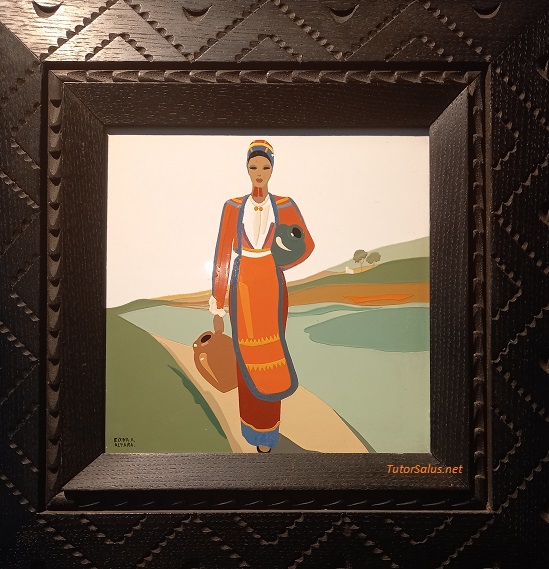De l'eau.

‘La porteuse d’eau’, by Edina Altara [1] (ceramic with wooden frame).
“With his own work, the tailor was able to show investments in textiles, jewels and trimmings assembled into an outfit matching with dresses and ornaments… The tailors were part of this productive economic system, as participating to the moulding of a taste which became cultural value… Almost like a work of Art, each dress was the result of agreements made between the tailor and the client, both sharing the initial project. The final outcome however was the result of a work of haute couture achieved by putting into practice a method which guaranteed the quality of the product along with client satisfaction.”[2]
A psychoanalyst knows about haute couture, it’s logical.
Is it for carelessness then that it is called genre Culture ?
Marina Bilotta Membretti / Cernusco sul Naviglio - August 5, 2023
[1] Edina Altara (1898-1983) was born in Sassari where her talent in drawing very soon made itself known : she participated in 1917 to an exhibition of Art in Turin and her collage, titled ‘Jesus salvadelu’ was acquired by king Vittorio Emanuele III (still today the work can be found in Rome, at the Loggia d’Onore in Quirinale). At first she devoted herself to drawing for ceramic productions (plates, saucers, tiles then framed as in the above picture), in 1934 she went to Milan to collaborate with fashion sketches at the magazine ‘Grazia’, and in 1942 also at the magazine ‘Bellezza’ edited by Giò Ponti, as well as ‘Stile’ and ‘Domus’ and up to collaborations for the furniture of five Italian ocean liners. She was fashion illustrator for the magazine ‘Rakam’, for ‘Il Giornalino della Domenica’ – a publication of ‘Domenica del Corriere’ dedicated to teenagers – for various advertisements (cosmetics, beauty products) and illustrator of novels on magazines. Two exhibitions in the last months did show a few of her most beautiful works : ‘Edina Altara. La mia Sardegna’ at the ’Art Port Gallery’ at Olbia, and ‘Edina Altara. Mondi di carta’ at the ‘Galleria Siotto’at Cagliari.
[2] ‘L’arte del sarto nel Medioevo’, by Elisa Tosi Brandi (2017) Società editrice ‘il Mulino’, pag. 217